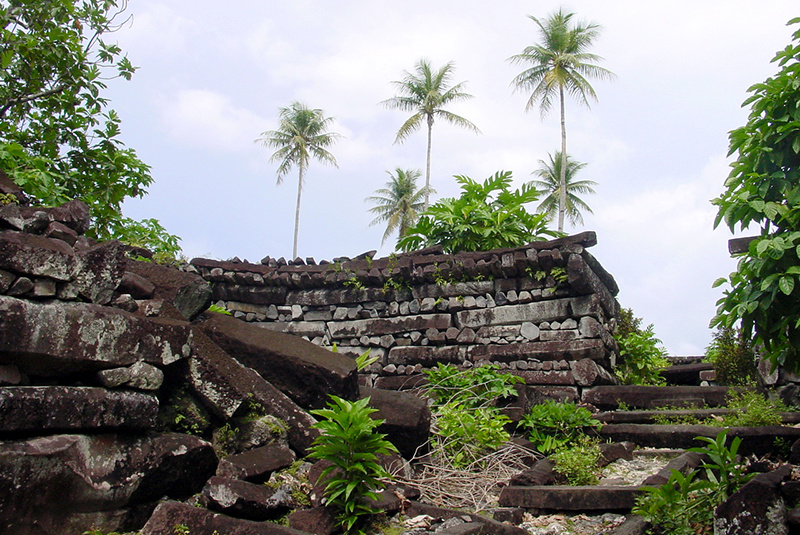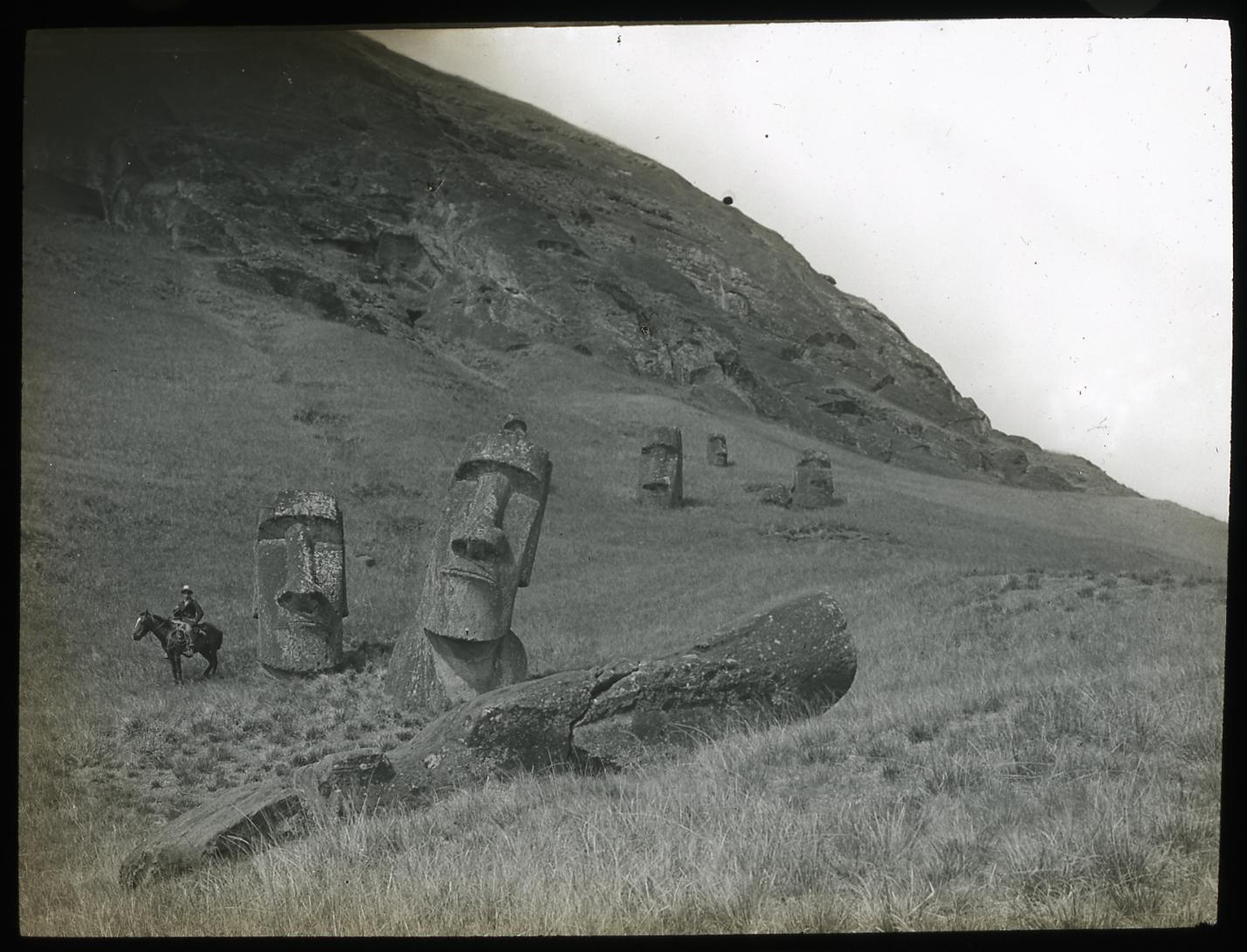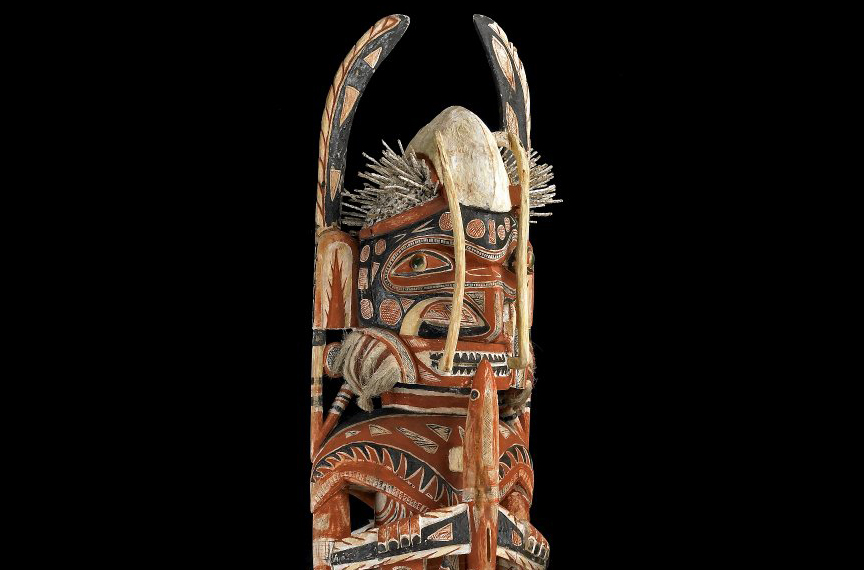9.3 Theories and Interpretations of Pacific Art
3 min read•june 18, 2024
Sylvia Rodriguez
AP Art History 🖼
34 resourcesSee Units
Welcome to this study guide on the fascinating ancient structures of the Pacific Islands, specifically focusing on Nan Madol, Moai on platform (ahu), Malagan display, and mask. These structures and objects serve as a testament to the unique cultural heritage and architectural prowess of the Pacific Islanders and are important examples of their art and history. This study guide will dive into each of these structures and objects, exploring their cultural significance, design, construction, and purpose. Get ready to delve into the rich and diverse art and architecture of the Pacific Islands!
Nan Madol:

Nan Madol, 13th-17th century C.E., Pohnpei, The Federated States of Micronesia (photo: CT Snow, CC BY 2.0)
- Location: Pohnpei Island, Micronesia
- Historical significance: Nan Madol is a complex of man-made islets that were used as a political and religious center by the Saudeleur dynasty in the late first millennium CE.
- Architectural style: The islets are constructed of stone columns and walls and are interconnected by canals. The design of Nan Madol is unique in that it was built on top of a coral reef and utilized canals for transportation and access to the different islets.
- Cultural significance: Nan Madol is considered one of the most impressive ancient structures in the Pacific and is an important symbol of the power and influence of the Saudeleur dynasty.
Moai on Platform (Ahu):

View of the northeast of the exterior slopes of the quarry, with several moai on the slopes, Rapa Nui (Easter Island), photo by Katherine Maria Routledge, c. 1914–15, 8.2 x 8.2 cm, lantern slide (photograph) (© Trustees of the British Museum)
- Location: Easter Island, Chile
- Historical significance: The Moai are monolithic stone statues that were created by the Rapa Nui people on Easter Island between the 10th and 16th centuries CE. They were typically placed on platforms (ahu) facing the ocean and were believed to have spiritual significance for the Rapa Nui people.
- Physical characteristics: Moai range in height from 4 to 33 feet and weigh several tons. They have distinctive stylistic features, including large heads, stylized bodies, and prominent eyebrows.
- Cultural significance: The Moai on Easter Island are one of the most iconic symbols of Pacific Island culture and are considered a major feat of engineering and sculpture. They represent the spiritual beliefs and practices of the Rapa Nui people and are a testament to their cultural and technological achievements.
Malagan Display and Mask:

Malangan figure (detail), 1882-83 C.E., 122 cm high, wood, vegetable fiber, pigment and shell (turbo petholatus opercula), north coast of New Ireland, Papua New Guinea © Trustees of the British Museum
- Location: New Ireland, Papua New Guinea
- Historical significance: Malagan is a complex of ceremonies and rituals that were practiced by the people of New Ireland for centuries. The ceremonies were held to mark important events and to honor the dead.
- Physical characteristics: Malagan masks are typically carved from wood and are decorated with intricate patterns and designs. They are often paired with other objects, such as wooden poles, to create a complete display.
- Cultural significance: Malagan ceremonies and masks are an important part of New Ireland's cultural heritage and are considered a key example of Pacific Island art and ritual practices. They provide insight into the beliefs and values of the people who created them and are a testament to the ongoing importance of cultural traditions in the Pacific Islands.
The Pacific Islands are home to some of the world's most unique and fascinating art and cultural traditions. Nan Madol, Moai on Platform (Ahu), and Malagan Display and Mask are all important examples of the ways in which different cultures have interacted and influenced each other in the Pacific Islands. These works of art and cultural practices serve as powerful symbols of the strength and resilience of Pacific Island cultures and provide important insight into the beliefs, values, and traditions of the people who lived there. As we study these examples, we gain a deeper understanding of the complexity and diversity of Pacific Island cultures and the ongoing importance of preserving these cultural traditions for future generations.
Browse Study Guides By Unit
🗿Unit 1 – Global Prehistoric Art, 30,000-500 BCE
🏛Unit 2 – Ancient Mediterranean Art, 3500-300 BCE
⛪️Unit 3 – Early European and Colonial American Art, 200-1750 CE
⚔️Unit 4 – Later European and American Art, 1750-1980 CE
🌽Unit 5 – Indigenous American Art, 1000 BCE-1980 CE
⚱️Unit 6 – African Art, 1100-1980 CE
🕌Unit 7 – West and Central Asian Art, 500 BCE-1980 CE
🛕Unit 8 – South, East, and Southeast Asian Art, 300 BCE-1980 CE
🐚Unit 9: The Pacific, 700–1980 ce
🏢Unit 10 – Global Contemporary Art, 1980 CE to Present
📚Study Tools

Fiveable
Resources
© 2025 Fiveable Inc. All rights reserved.